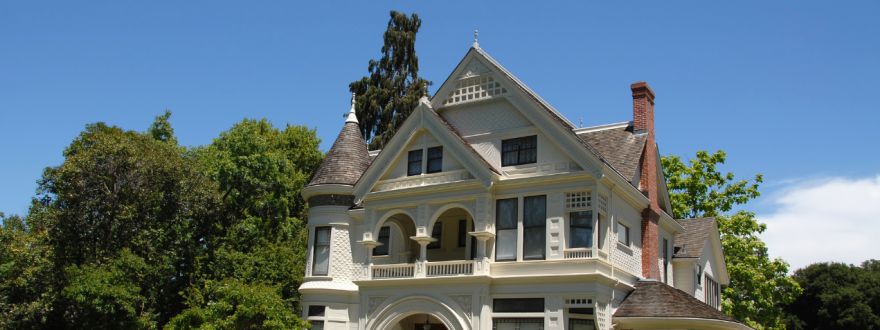
Insurance is crucial for protecting valuable assets, but it can get complicated when it comes to historic buildings. Older structures often come with higher risks, making it challenging to find affordable coverage—or even any coverage at all. If you're facing these hurdles, don’t worry. We’ve put together 7 key tips to help you navigate the complexities of insuring older commercial buildings. Keep reading to make sure you're prepared!
Ensure Compliance with Modern Codes
Building codes naturally gravitate toward a higher level of care with the passage of time. Therefore, the standards that were acceptable at the time a historic building was constructed are likely to be insufficient today. Lead-based paint, clay pipes, and asbestos ceiling tiles were once-common building materials that no longer pass code in 2024.
Another important area to consider is ADA compliance. Accessibility has received increased focus in recent years as society prioritizes equal opportunity for people regardless of disability. As such, many historic buildings may not meet ada railing requirements or other key safety standards, so be sure to perform due diligence in this regard prior to seeking coverage.
Perform a Comprehensive Inspection
It is critical to know exactly what you have before seeking coverage. You can bet the insurance company will be ready to pounce on any potential problem, so don’t get caught by surprise. Take a comprehensive look at all elements of the building to assess quality and condition.
Use the best scaffolding for construction to access upper-story windows and other hard-to-reach areas of the structure. Hire professionals to provide an honest assessment of the HVAC, wiring, plumbing, foundation, and any other critical building component.
Renovate as Necessary Prior to Seeking Coverage
Part of the allure of owning and operating a historic building is staying as true to the original as possible. However, there will simply be some aspects of the structure that need to be renovated to not only guarantee safety and functionality, but to help receive the best insurance coverage possible. Windows are a common area to receive attention.
Old-fashioned wood-framed windows pale in comparison to modern aluminum or hurricane-grade storm windows. As such, window retrofitting is one of the most common renovations to help modernize historic buildings. It is also a great idea to incorporate some features that take the burden off of older HVAC systems. Radiant floor heating and commercial grade ceiling fans are a couple of great ideas for providing interior climate control without kicking HVAC into overdrive.
Improve the Security System
One underrated aspect of insuring old buildings lies in security. Insurers may view historic buildings as easier to break into or vandalize than more modern structures. As such, take some steps to modernize the security system without compromising the classic ambiance. Security doors with credentialed access, comprehensive camera monitoring, and robust alarm systems are all features upon which insurers will look favorably.
Increase Your Deductible
In most cases, the major driving force behind insurance coverage is to protect against total loss. You want to make sure that you’re covered when that catastrophic event strikes. As such, you don’t want a series of small claims to impact future coverage. Most insurers already view historic buildings as “risky” and “expensive.” If you are willing to raise your deductible and bear financial responsibility for smaller issues, it is more likely to result in favorable coverage terms for large-scale protection.
Install Fire Prevention Measures
Rampant wildfires are making national headlines with regularity in the era of climate change. It has caused insurance premiums in some areas of the country to skyrocket. Fortunately, there have been wonderful innovations in the realm of fire-resistant building materials in recent years.
Class-A fire shingles for roofing, engineered cladding, and fire-proof doors offer some of the best fire protection on the market. While these materials all favorably impact insurance premiums, they are not always easy to incorporate into older buildings trying to maintain their historic aspect.
The good news is that there are still plenty of fire prevention tactics to deploy. Consider installing fire dampers to HVAC ducts, replacing old electrical wiring with thermoplastic high-heat nylon coated wire, and adding a modern sprinkler system throughout the structure for increased fire protection without sacrificing classic aesthetics.
Check for Guaranteed Replacement Cost Coverage
This type of coverage is not available in all states or by all insurers, but it is worthwhile to check. It promises to replace the structure back to its original condition, no matter the cost. It prevents the insurer from writing you a check or simply replacing the building with a commensurate structure. Although you will have to pay more for this type of coverage, it could prove to be very beneficial if preserving the historic aspect of your building is the top priority.
Work with an Experience Broker When Shopping for Coverage for Historical Buildings
The complexities of insurance are intimidating in any corner of the industry. They are compounded when it comes to insuring historic commercial buildings. As such, if you are seeking the best coverage possible for your older building, contact the Barber Insurance Agency for a consultation today!
Author Bio:
Roger Marx is a freelance writer that loves sharing his knowledge and expertise on the latest trending building and design products. He lives in Minneapolis, Minnesota where he enjoys spending time with his wife and working on backyard projects in his spare time. Roger’s work as a freelance writer can be found on Building Product Advisor, a construction industry resource site.





